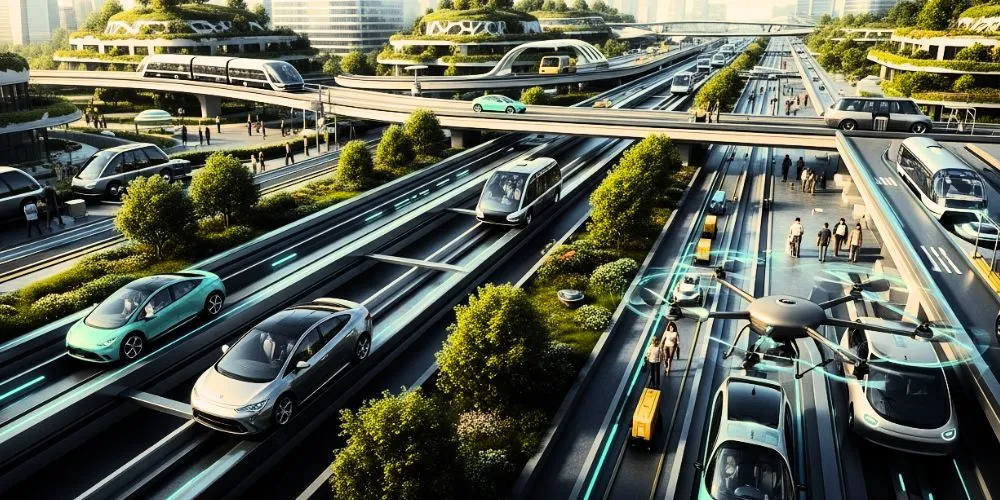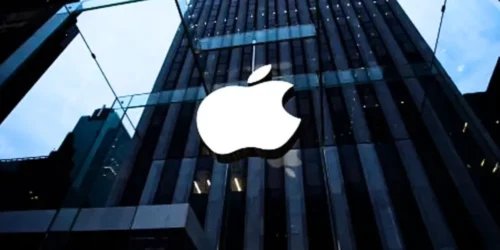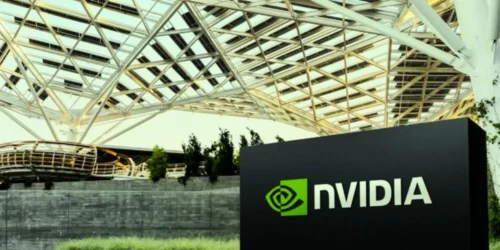Think about your morning commute. For most of us, it’s a ritual carved in steel, asphalt, and frustration. It might be the solitary confinement of your car, inching along in a metallic river of brake lights, the radio a feeble distraction from the wasted time. It might be the crowded intimacy of a subway car, a study in collective patience as you sway in unison with strangers. Or perhaps it’s the stop-start lurch of a city bus, its progress tethered to the whims of traffic and the pace of its passengers.
For over a century, this has been the fundamental grammar of our lives. The way we move has dictated where we live, where we work, how our cities are shaped, and even how we perceive freedom itself. The system, built around the internal combustion engine and the principle of individual ownership, was a marvel of 20th-century ingenuity. It powered economies, built suburbs, and gave generations a sense of personal liberty measured in miles per hour.
But that system is breaking. The daily ballet of gridlock is no longer just an annoyance; it’s an economic anchor, bleeding trillions of dollars in lost productivity. The smoggy haze hanging over our cities is not just an aesthetic problem; it’s a public health crisis and a primary driver of climate change. The 1.3 million people who die on the world’s roads each year are not just statistics; they are a staggering, yet accepted, human cost of our mobility.
We are standing at a precipice, staring at the end of the road for the transportation paradigm that defined the modern world. But this is not an apocalyptic vision. It is the dawn of a revolution. A powerful confluence of technologies—electrification, pervasive connectivity, artificial intelligence, and the sharing economy—is converging to dismantle and rebuild the very concept of movement utterly.
This is a revolution not just of machines, but of systems. It promises a future of whispering electric fleets that cleanse our skies, of autonomous pods that arrive on demand, of cities redesigned for people instead of parking lots. It envisions a seamless, integrated network where the friction of travel simply melts away, managed by intelligent algorithms that optimize every journey.
But this technological utopia is not preordained. Every great leap forward casts a long shadow. This revolution also carries the potential for a more dystopian future: one of massive job displacement, of unprecedented surveillance, of a digital divide that creates new forms of inequality, and of ethical quandaries that we are only just beginning to contemplate.
This case study will journey through this momentous transformation. We will dissect the key technologies that are acting as the battering rams against the old order. We will explore the grand promises they hold and the profound challenges they present. This is not simply a story about cars, trains, and drones. It is a story about the reinvention of society itself, a case study on how the code we write, the batteries we build, and the networks we connect are forging the landscape of the 21st century. The traffic jam is over. A new journey is about to begin.
The Age of Inertia – Deconstructing the Legacy System
To understand the scale of the revolution, we must first appreciate the immense weight and inertia of the system it seeks to replace. The 20th-century transportation model was not just a collection of technologies; it was a deeply ingrained social, economic, and cultural ecosystem built around a single, dominant deity: the privately owned, gasoline-powered automobile.
The rise of the car, particularly after World War II, was not an accident. It was a deliberate project. Visionaries like Henry Ford didn’t just democratize the automobile with the Model T; they ignited a cultural obsession with personal mobility. Governments, especially in the United States, cemented this obsession in concrete and steel. President Eisenhower’s Interstate Highway System, conceived as a national defense network, became the asphalt arteries of a new suburban America. Cities were re-engineered, bulldozing historic neighborhoods to make way for freeways. The home with a two-car garage became the cornerstone of the American Dream.
This system delivered on its promises, for a time. It fueled unprecedented economic growth, creating vast industries from manufacturing and oil extraction to roadside motels and fast-food chains. It offered a thrilling sense of freedom and autonomy, the ability to go anywhere, anytime. Public transit, once the vibrant heart of urban life, was relegated to a secondary role, often underfunded and stigmatized as a service for those who couldn’t afford the “superior” option of a car.
But this triumph came at a monumental cost, creating a set of interlocking crises that have now reached a breaking point.
The Tyranny of Congestion
The very success of the automobile created its primary failure. As car ownership exploded, the roads built to accommodate them became choked. The promise of freedom devolved into the reality of the traffic jam. We designed a system where multi-ton steel boxes, each carrying an average of just 1.6 people, occupy vast amounts of space simply to move a short distance. Cities like Los Angeles, São Paulo, and Jakarta became monuments to gridlock, where commuters lose hundreds of hours and thousands of dollars each year simply sitting still. This isn’t just wasted time; it’s a colossal drain on economic efficiency and a major source of stress and poor quality of life.
The Environmental Toll
The beating heart of the 20th-century system was the internal combustion engine (ICE). This marvel of mechanical engineering has a dirty secret: it is stunningly inefficient, converting only about 20-30% of the energy in gasoline into forward motion. The rest is lost as waste heat and noise. The byproduct of this inefficiency is a torrent of pollutants. Greenhouse gases like carbon dioxide drive climate change. Particulate matter, nitrogen oxides, and other toxins foul the air we breathe, contributing to asthma, heart disease, and cancer. The transportation sector now stands as one of the single largest sources of greenhouse gas emissions globally. The hum of traffic is the sound of our planet warming.
The Human Cost
We have become tragically numb to the carnage on our roads. Globally, a traffic fatality occurs every 24 seconds. It is the leading cause of death for people aged 5-29. This is a pandemic in plain sight, one we have implicitly accepted as the price of mobility. The overwhelming majority of these crashes—over 90%—are caused by human error: distraction, intoxication, fatigue, poor judgment. We have designed a system that places flawed, distractible humans in direct control of two-ton projectiles and then acts surprised when the results are catastrophic.
The Inequity of Design
The car-centric model created deep-seated social and economic divides. If you cannot afford a car—due to income, age, or disability—your access to jobs, education, healthcare, and even fresh food can be severely limited. Public transit systems, designed as hub-and-spoke networks to bring commuters into a central business district, often fail to serve the complex, polycentric travel patterns of modern life, leaving many communities isolated. The very landscape of our cities, dominated by vast parking lots and multi-lane highways, is hostile to pedestrians, cyclists, and community interaction. We have sacrificed public space for parking space.
This legacy system—congested, polluting, dangerous, and inequitable—is a victim of its success. It has reached the limits of its design. Adding more lanes to a highway to solve congestion is like loosening your belt to solve obesity; it provides temporary relief but fails to address the underlying problem. We cannot simply iterate on the 20th-century model anymore. The problems are too fundamental. A paradigm shift is not just desirable; it is necessary for survival. And it is this necessity that has become the mother of a technological reinvention.
The First Shockwave – Electrification and Connectivity
The revolution did not begin with a single “big bang” moment, but rather with two powerful, parallel shockwaves that are already remaking the automotive landscape: the electrification of the powertrain and the connection of the vehicle to the digital world.
The Electric Charge – More Than Just a Battery
For decades, the electric vehicle (EV) was a curiosity, a niche product for environmental enthusiasts, hobbled by limited range, sluggish performance, and a profound lack of aesthetic appeal. The dominant narrative, carefully cultivated by incumbent automakers and the fossil fuel industry, was that EVs were impractical.
Then came Tesla. What Elon Musk and his team understood was that the EV could not succeed by being a slightly less-polluting, but otherwise inferior, version of a gasoline car. It had to be better. Tesla’s vehicles offered blistering acceleration that humbled sports cars, a silent and smooth ride, and a sleek, minimalist design powered by a massive, intuitive touchscreen. They wrapped a technologically superior product in an irresistible package of high-tech desirability. Tesla didn’t just sell a car; it sold the future.
This act of technological and marketing jujitsu shattered the industry’s inertia. It proved that a mass market for premium EVs existed. It forced every major automaker—from Volkswagen and GM to Hyundai and Ford—to pivot, investing hundreds of billions of dollars to catch up desperately. The EV revolution was suddenly in full swing, driven by three core technological advancements:
- Battery Chemistry and Density: The heart of the modern EV is the lithium-ion battery. Decades of steady, incremental improvements, driven largely by the consumer electronics industry, have dramatically increased energy density (how much power can be stored in a given size) while simultaneously driving down costs. The price of a lithium-ion battery pack fell by nearly 90% between 2010 and 2020. This was the critical threshold that made long-range, affordable EVs viable.
- Motor and Powertrain Efficiency: Electric motors are fundamentally superior to internal combustion engines. They are far simpler, with a fraction of the moving parts, leading to greater reliability and lower maintenance costs (goodbye oil changes). They are also vastly more efficient, converting over 90% of electrical energy into mechanical force. This efficiency, combined with regenerative braking—which captures energy during deceleration to recharge the battery—gives EVs their impressive range and performance.
- Software and Systems Integration: A modern EV is less a mechanical device and more a computer on wheels. Tesla pioneered the concept of over-the-air (OTA) software updates, allowing the company to fix bugs, add new features, and even improve the car’s performance and range remotely while its owner sleeps. This transforms the car from a static object that depreciates from the moment it leaves the dealership into a dynamic platform that can evolve and improve over time.
The shift to electric power is not as simple as swapping a gas tank for a battery. It triggers a cascade of systemic changes and new challenges.
- The Charging Conundrum: The convenience of the five-minute gas station fill-up is a high bar to clear. Building out a robust, reliable, and ubiquitous public charging infrastructure is a monumental task. It requires massive investment and coordination between governments, utilities, and private companies. Furthermore, it exposes a new form of inequity: homeowners can easily install a Level 2 charger in their garage for convenient overnight charging, while renters and apartment dwellers are often left dependent on a patchwork of expensive and often unreliable public stations.
- Grid Strain: A mass migration to EVs will place enormous new demands on our aging electrical grids. While many studies suggest the grid can handle the overall load, particularly with smart charging that encourages off-peak usage, it will require significant upgrades at the local distribution level to prevent blackouts. EVs, however, also present an opportunity. With vehicle-to-grid (V2G) technology, the millions of EVs parked at any given time could act as a massive, distributed battery, storing excess renewable energy and selling it back to the grid during peak demand, helping to stabilize it.
- The Geopolitics of a Battery: The EV revolution trades a dependency on oil from the Middle East for a dependency on critical minerals like lithium, cobalt, nickel, and rare earths, the mining and processing of which are heavily dominated by China. This creates a new set of geopolitical vulnerabilities and raises serious ethical and environmental concerns about mining practices in countries like the Democratic Republic of Congo. The race is on to diversify supply chains and develop new battery chemistries that rely on more common materials.
The Connected Car – A Digital Nervous System
Simultaneously, a quieter but equally profound revolution has been taking place inside the vehicle. The car has transformed from an isolated, analog machine into a sophisticated, connected sensor platform—a node on the internet.
This connectivity began simply, with GPS navigation replacing paper maps. But it has rapidly evolved into a complex ecosystem of data flows that form a digital nervous system for our transportation networks. Think about the apps on your phone. Waze, Google Maps, and Apple Maps don’t just know the static road network; they ingest real-time, anonymized location data from millions of users to “see” traffic jams as they form, dynamically re-routing drivers to save time. This is a simple but powerful example of collective intelligence making the entire system more efficient.
This connectivity is becoming deeper and more integrated into the vehicle itself, a concept known as V2X, or “Vehicle-to-Everything” communication:
- Vehicle-to-Vehicle (V2V): Cars communicate directly with each other, sharing data on speed, position, and braking. A car that slams on its brakes around a blind corner can instantly warn the cars behind it, preventing a pile-up.
- Vehicle-to-Infrastructure (V2I): Vehicles communicate with traffic lights, road signs, and lane markings. A traffic light can tell an approaching car that it is about to turn red, allowing the car to coast to a stop more efficiently. It can also give priority to emergency vehicles or buses, smoothing urban flow.
- Vehicle-to-Pedestrian (V2P): A vehicle can detect a signal from a pedestrian’s smartphone or a cyclist’s transponder, warning the driver of their presence before they are visually apparent.
The benefits of this connected ecosystem are immense: dramatic improvements in safety, greater fuel efficiency, and a significant reduction in congestion. However, it also opens a Pandora’s box of data privacy and security concerns.
Your connected car knows where you go, when you go there, how fast you drive, how hard you brake, and what music you listen to. This is an incredibly valuable trove of data. Who owns it? You, the driver? The automaker? The developer of the navigation app? How is it being used? Insurance companies are already offering discounts for “good” drivers based on telematics data, but this could easily morph into a system that penalizes people for driving late at night or through certain neighborhoods. Automakers could sell your location data to retailers. Hackers could potentially gain access to a vehicle’s controls, creating a terrifying new form of cyber-terrorism.
Establishing clear regulations and robust cybersecurity standards for this torrent of data is one of the most urgent and complex challenges of the transportation revolution. We are building a system of unprecedented efficiency and safety, but it may come at the cost of our privacy.
The Horizon Line – Autonomy and the End of Ownership
If electrification and connectivity are the current shockwaves, then the tidal wave building on the horizon is automation. The quest to create a fully autonomous vehicle (AV)—a car that can drive itself anywhere, anytime, in any conditions without human intervention—is the holy grail of transportation technology. Its achievement would not just change driving; it would fundamentally break the entire model of car ownership and reshape our world.
The Ghost in the Machine – The Quest for Autonomy
The concept of a self-driving car is not new, but only recently has the convergence of three technologies made it a tangible engineering problem:
- Sensing: AVs perceive the world through a suite of superhuman senses. High-resolution cameras provide rich visual data. Radar penetrates rain, fog, and snow to detect the position and velocity of other objects. LiDAR (Light Detection and Ranging) uses lasers to create a constantly updating, millimeter-accurate 3D map of the car’s surroundings.
- Processing: The torrent of data from these sensors is fed into powerful, onboard computers. These specialized processors, akin to supercomputers, must run sophisticated AI software to perform “sensor fusion”—stitching the data from all sensors into a single, coherent model of the world.
- Actuation: The AI, known as the “driving policy,” makes decisions—accelerate, brake, steer, change lanes—and sends those commands to the car’s electronic control systems. This entire sense-process-act loop must happen in milliseconds, thousands of times per second.
The industry defines progress through the SAE Levels of Automation, from Level 0 (no automation) to the utopian Level 5 (full automation everywhere). The industry is currently wrestling with Levels 2, 3, and 4. Level 2 systems, like Tesla’s Autopilot or GM’s Super Cruise, are advanced driver-assistance systems that can handle steering and speed on highways but require the human driver to remain fully engaged and ready to take over at any moment.
The chasm between Level 2 and a truly driverless Level 4 (a car that can handle all driving in a specific, geofenced area, like a city center) is immense. The challenge lies not in the 99% of routine driving, but in the 1% of chaotic, unpredictable “edge cases”: a child chasing a ball into the street, a construction zone with a human flagger giving confusing signals, a flock of birds suddenly taking flight. Teaching an AI to handle the infinite, messy complexity of human behavior is the central problem that companies like Waymo (from Google), Cruise (from GM), and a host of startups are spending billions to solve.
If and when true Level 4/5 autonomy is achieved and deployed at scale, the consequences will be staggering.
- The End of Car Ownership? Why own a depreciating asset that sits parked 95% of the time? In an autonomous future, you wouldn’t buy a car; you would summon one. A fleet of shared, electric, autonomous vehicles (sometimes called “robotaxis”) would provide on-demand mobility at a per-mile cost far cheaper than owning, insuring, and maintaining a personal car.
- The Redesign of Cities: This would be the single biggest change to the urban landscape in a century. If cars don’t need human drivers and are constantly in motion, the need for parking plummets. The vast tracts of land currently dedicated to parking lots and garages—up to a third of the land in some U.S. cities—could be reclaimed for parks, housing, and public spaces. The car’s interior could be redesigned as a mobile office, living room, or entertainment pod.
- The Great Job Disruption: Autonomy would decimate professions built around driving. Millions of jobs in trucking, taxi, and ride-hailing services, delivery, and public transit would be rendered obsolete. This would create a societal challenge on the scale of the industrial revolution, requiring massive investment in retraining programs and a potential rethinking of the social safety net, possibly including concepts like Universal Basic Income (UBI).
- The Ethical Minefield: The “trolley problem” is the most famous ethical dilemma of AVs: in an unavoidable crash, should the car swerve to hit one person to save five? Or protect its occupant at all costs? These are not just philosophical thought experiments. Engineers and policymakers must encode a set of ethical rules into these machines. Who is liable in a crash? The owner? The manufacturer? The software programmer? Our legal and insurance systems are entirely unprepared for these questions.
Mobility as a Service (MaaS) – The Great Integration
Running parallel to the development of autonomy is the rise of a new service model: Mobility as a Service (MaaS). The core idea of MaaS is to shift users away from personally owned modes of transport and towards consuming mobility as a subscription service.
The pioneers of this model were ride-hailing companies like Uber and Lyft. They didn’t invent a new technology; they created a brilliant software platform that seamlessly connected idle capacity (drivers with their cars) with demand (passengers needing a ride). They eliminated the friction of hailing a cab, handling payment, and navigating.
MaaS seeks to take this concept to its ultimate conclusion. A single app on your phone would become your portal to every conceivable transportation option in your city. You would input your destination, and the app would present you with a menu of choices, optimized for cost, time, or environmental impact. It might suggest taking a shared scooter to the train station, riding the train downtown, and then using a ride-hailing service for the “last mile” to your office—all planned and paid for within one seamless transaction.
This vision requires an unprecedented level of integration between public and private operators. City transit agencies, bike-share programs, scooter companies, and ride-hailing services would all need to share data and integrate their payment systems. This creates a fundamental tension: should MaaS be a public utility, managed by a city to ensure equitable access and prioritize sustainable modes like public transit? Or should it be a competitive marketplace, dominated by private tech giants like Google or Uber, who would seek to maximize profit? The answer to this question will determine whether MaaS leads to a more efficient and equitable urban transport system or simply a more convenient one for the affluent.
The Unseen Architect – Reinventing the Movement of Goods
While the transformation of personal mobility grabs most of the headlines, an equally dramatic revolution is occurring in the often-invisible world of logistics and freight. The “Amazon effect”—the consumer expectation of near-instantaneous delivery—has placed immense pressure on the entire supply chain, forcing a technological overhaul from the warehouse to the doorstep.
The modern fulfillment center is already a marvel of automation. Fleets of autonomous robots, like those pioneered by Kiva Systems (now Amazon Robotics), scurry across warehouse floors, bringing shelves of goods to human pickers, drastically increasing speed and efficiency. AI-powered software optimizes every step of the process, from inventory management to packing and routing.
The next frontiers are the “middle mile” and the “last mile.”
- Autonomous Trucking: The long-haul trucking industry is ripe for automation. Trucks spend most of their time on predictable, structured highways, making the technical challenge simpler than urban driving. An autonomous truck can operate 24/7 without rest breaks, dramatically improving asset utilization and slashing shipping times. This promises to lower the cost of goods for everyone. Still, it also threatens the livelihoods of millions of truck drivers, a profession that is a cornerstone of the working class in many countries.
- The Last-Mile Challenge: The final step of delivery, from a local distribution hub to your front door, is the most expensive and inefficient part of the journey. A host of technologies are competing to solve this problem. Delivery vans are being equipped with sophisticated routing software to minimize travel time. Sidewalk delivery robots are being tested in dense urban areas and on college campuses. And the most futuristic solution, drone delivery, promises to bypass traffic entirely, though it faces significant regulatory, safety, and public acceptance hurdles.
This logistics revolution is physically reshaping our cities. The demand for rapid delivery is leading to the rise of “dark stores” and micro-fulfillment centers—small, non-public warehouses embedded within neighborhoods to shorten delivery times. This, in turn, increases the number of delivery vans on city streets, paradoxically adding to the very congestion that other transportation technologies are trying to solve.
Conclusion: A Crossroads for Humanity
We are living through a hinge point in history. The technologies of electrification, connectivity, automation, and shared services are not merely offering incremental improvements to the 20th-century model of transportation. They are offering a fundamentally new one. The pieces are on the board for a future that could be cleaner, safer, more efficient, and more equitable than anything we have ever known.
Imagine a city in 2040. The air is clean and the streets are quiet, filled with the whisper of shared, electric, autonomous pods. The vast expanses of land once dedicated to parking have become vibrant parks, affordable housing, and bustling public plazas. Mobility is a utility, summoned on demand, seamlessly integrating all modes of transport. Roadway fatalities are a thing of the past, a barbaric relic of a bygone era. The time once lost to traffic jams is now reclaimed for work, leisure, or family.
This is the promise. But it is not a guarantee. Technology is a powerful tool, but it is agnostic. It can be used to build a utopia or a dystopia. An autonomous, connected future could also become a surveillance nightmare, where our every movement is tracked, analyzed, and monetized. It could create a new caste system, with a tech-savvy elite enjoying seamless mobility while the less affluent are left behind with decaying public services. The mass displacement of jobs in driving and logistics could trigger profound social and political instability if we fail to manage the transition with foresight and compassion.
The road ahead is not yet paved. The choices we make in this decade—as policymakers, as engineers, as investors, and as citizens—will determine the destination. Will we prioritize public good over private profit? Will we build systems that are equitable and inclusive, or ones that exacerbate existing divides? Will we establish robust protections for our data and our privacy?
The end of the road for the old way of moving is in sight. But what lies beyond it is not a fixed destiny written in code and silicon. It is a choice. The great transportation revolution of the 21st century is not ultimately about the machines we will ride in. It is about the kind of society we want to build.













